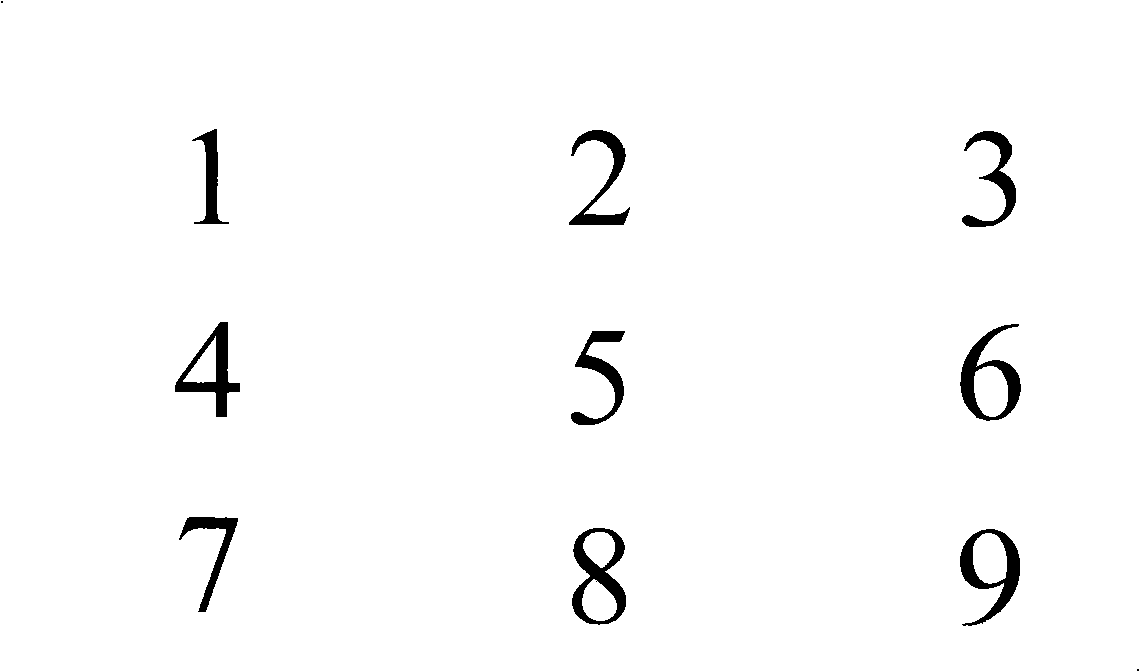Target selecting method based on transient visual evoked electroencephalogram
A technology of visual induction and target selection, applied in the input/output of user/computer interaction, biological neural network models, computer components, etc., can solve problems such as errors between assumptions and real situations, complex calculation processes, etc., and achieve good recognition The effect of improving the rate, improving the accuracy, improving the signal-to-noise ratio and recognition rate
Inactive Publication Date: 2010-12-01
BEIJING UNIV OF TECH
View PDF0 Cites 0 Cited by
- Summary
- Abstract
- Description
- Claims
- Application Information
AI Technical Summary
Problems solved by technology
Both P300 and VEP are evoked potentials and do not require training. Since evoked potentials appear at a specific time, their signal detection and processing methods are relatively simple and have a high accuracy rate. a certain perception (such as vision)
Although the above methods can realize the extraction of EP / ERP to a certain extent, these methods either assume that there is an error with the real situation, or the calculation process is too complicated, and cannot solve the problem of evoked potential extraction well.
Method used
the structure of the environmentally friendly knitted fabric provided by the present invention; figure 2 Flow chart of the yarn wrapping machine for environmentally friendly knitted fabrics and storage devices; image 3 Is the parameter map of the yarn covering machine
View moreImage
Smart Image Click on the blue labels to locate them in the text.
Smart ImageViewing Examples
Examples
Experimental program
Comparison scheme
Effect test
Embodiment Construction
the structure of the environmentally friendly knitted fabric provided by the present invention; figure 2 Flow chart of the yarn wrapping machine for environmentally friendly knitted fabrics and storage devices; image 3 Is the parameter map of the yarn covering machine
Login to View More PUM
 Login to View More
Login to View More Abstract
The invention relates to a target selecting method based on transient visual evoked electroencephalogram, comprising the following steps: VC + + writing visual stimulator evokes an electroencephalogram signal, 16-lead collecting device collects an electroencephalogram signal VEP which is amplified by an electroencephalogram amplifier and A / D converted, so that the signal is input into a computer and memorized in a memorizer in a way of signal voltage magnitude; B sample band biorthogonal wavelet method is used for extracting an electroencephalogram characteristic signal, in addition, corresponding results are classified, identified and output by the self-learning ability of BP neuronic network; wherein, the method also comprising the following steps of: designing the accurate timing visual stimulator by CPU timestamp; answering the output impulse of paralled port; collecting the electroencephalogram signal VEP by a collecting device; pretreating the collected signal; extracting the electroencephalogram signal by the B sample band biorthogonal wavelet method; and classifying characteristic quantity by the BP neuronic network. The method has the advantage that the BP neuronic network is used for effectively improving signal to the noise ratio and the recognition rate of visual evoked potential VEP.
Description
Target selection method based on transient visually evoked EEG technical field The invention relates to a brain-computer interface (Brain-computer interface, BCI) device, which uses a precisely timed visual stimulator to generate transient visual evoked potentials for human visual stimulation, and performs feature extraction and classification on the evoked potentials, specifically involving B-splines A method of feature extraction and classification based on the combination of biorthogonal wavelet method and BP neural network. Background technique Brain-computer interface (Brain-computer interface, BCI) or brain-computer interface is a human-computer interface method, which is a system that realizes communication and control between the human brain and computers or other electronic devices based on EEG signals. BCI does not depend on the normal output pathways of the brain (peripheral nervous system and muscle tissue), and is a brand new way of communication and control. ...
Claims
the structure of the environmentally friendly knitted fabric provided by the present invention; figure 2 Flow chart of the yarn wrapping machine for environmentally friendly knitted fabrics and storage devices; image 3 Is the parameter map of the yarn covering machine
Login to View More Application Information
Patent Timeline
 Login to View More
Login to View More Patent Type & Authority Patents(China)
IPC IPC(8): G06F3/01G06N3/02
Inventor 李明爱张方堃张诚阮晓钢郝冬梅杨金福于建均
Owner BEIJING UNIV OF TECH
Features
- R&D
- Intellectual Property
- Life Sciences
- Materials
- Tech Scout
Why Patsnap Eureka
- Unparalleled Data Quality
- Higher Quality Content
- 60% Fewer Hallucinations
Social media
Patsnap Eureka Blog
Learn More Browse by: Latest US Patents, China's latest patents, Technical Efficacy Thesaurus, Application Domain, Technology Topic, Popular Technical Reports.
© 2025 PatSnap. All rights reserved.Legal|Privacy policy|Modern Slavery Act Transparency Statement|Sitemap|About US| Contact US: help@patsnap.com



